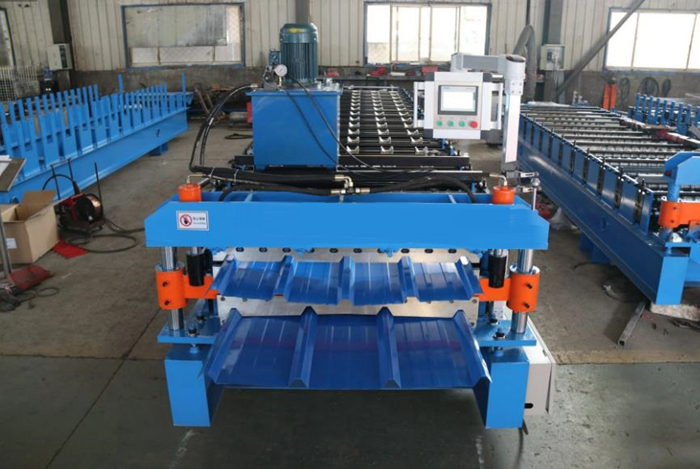Automatic Roll Forming Machine with Integrated Stacking System for Efficient Production
Understanding the Auto Roll Forming Machine Stacker Revolutionizing Industry Efficiency
In today's fast-paced manufacturing landscape, efficiency and precision are paramount. One of the key innovations that have emerged to meet these demands is the auto roll forming machine stacker. This advanced piece of equipment not only enhances productivity but also contributes significantly to the overall quality of the finished products.
What is an Auto Roll Forming Machine?
Before delving into the stacker itself, it’s essential to understand what a roll forming machine does. Roll forming is a continuous bending process in which a long strip of metal, typically steel or aluminum, is gradually shaped into the desired cross-section. The machine utilizes a series of rollers that progressively form the metal into predefined shapes, making it a favorite in industries like construction, automotive, and appliance manufacturing.
An auto roll forming machine encompasses automation features that enable efficient production runs, reducing the need for manual input. It can handle various materials, thicknesses, and shapes, making it a versatile tool in manufacturing.
The Role of the Stacker in Production
The stacker complements the roll forming process by automating the collection and stacking of the finished products. After the roll forming machine produces the desired profiles, the stacker picks them up, organizes them into specified stacks, and often prepares them for shipping or further processing. This integration of the stacker streamlines operations, drastically improving cycle times and reducing labor costs.
Key Features of Auto Roll Forming Machine Stackers
1. Automation and Precision One of the primary advantages of an auto stacker is its automation capability. The stacker can identify the shape and size of the formed products, ensuring precise stacking without human intervention. This precision minimizes the risk of errors, which can lead to damage or misallocation of components.
auto roll forming machine stacker

2. Customizability Many auto stackers are customizable, allowing manufacturers to tailor them to their specific production needs. This includes adjusting stack height, stack size, and the number of products per stack, making it adaptable to various production runs.
3. Integration with Existing Systems Auto stackers can typically be integrated with existing roll forming machines and inventory systems. This seamless integration helps in maintaining a continuous workflow, allowing for real-time tracking and management of materials.
4. Reduced Labor Costs By automating the stacking process, companies can significantly reduce labor costs associated with manual handling. Workers can be reassigned to more value-added tasks while the stacker efficiently manages the stacking operation.
5. Improved Safety Safety is an essential consideration in manufacturing environments. Auto stackers reduce the need for workers to engage in potentially hazardous manual handling, thus minimizing workplace injuries and improving overall safety standards.
6. Enhanced Flexibility Depending on production demands, auto stackers can quickly adapt to various configurations, whether for high-volume runs or smaller, specialized orders. This flexibility allows manufacturers to respond quickly to market changes.
Challenges and Considerations
While auto roll forming machine stackers bring numerous advantages, they are not without challenges. Initial investment costs can be significant, and companies must ensure they conduct thorough research to select the right equipment that meets their needs. Additionally, proper training for personnel is crucial to maximize the benefits of automation.
Conclusion
The advent of auto roll forming machine stackers has transformed the way manufacturers operate, significantly enhancing efficiency and quality. As industries continue to embrace advanced technologies, the integration of automated systems into production lines will likely become standard practice. By investing in such innovations, companies can ensure they remain competitive in an ever-evolving market, driving productivity while simultaneously ensuring precision and safety in their manufacturing processes. The future of manufacturing is bright, and automation is at the forefront of this exciting journey.
-
Roof Panel Machines: Buying Guide, Types, and PricingNewsJul.04, 2025
-
Purlin Machines: Types, Features, and Pricing GuideNewsJul.04, 2025
-
Metal Embossing Machines: Types, Applications, and Buying GuideNewsJul.04, 2025
-
Gutter Machines: Features, Types, and Cost BreakdownNewsJul.04, 2025
-
Cut to Length Line: Overview, Equipment, and Buying GuideNewsJul.04, 2025
-
Auto Stacker: Features, Applications, and Cost BreakdownNewsJul.04, 2025
-
Top Drywall Profile Machine Models for SaleNewsJun.05, 2025








